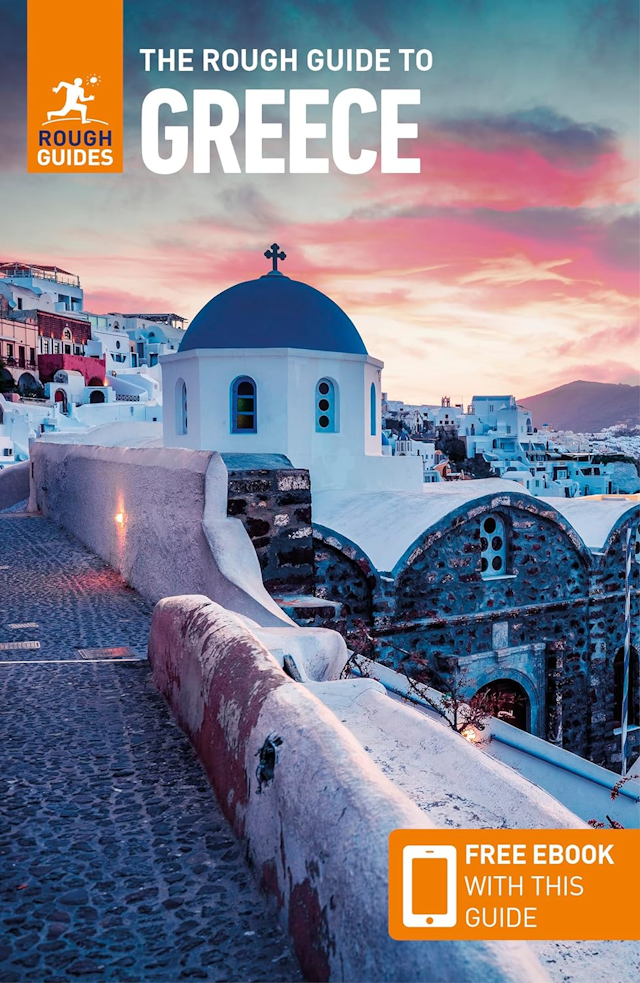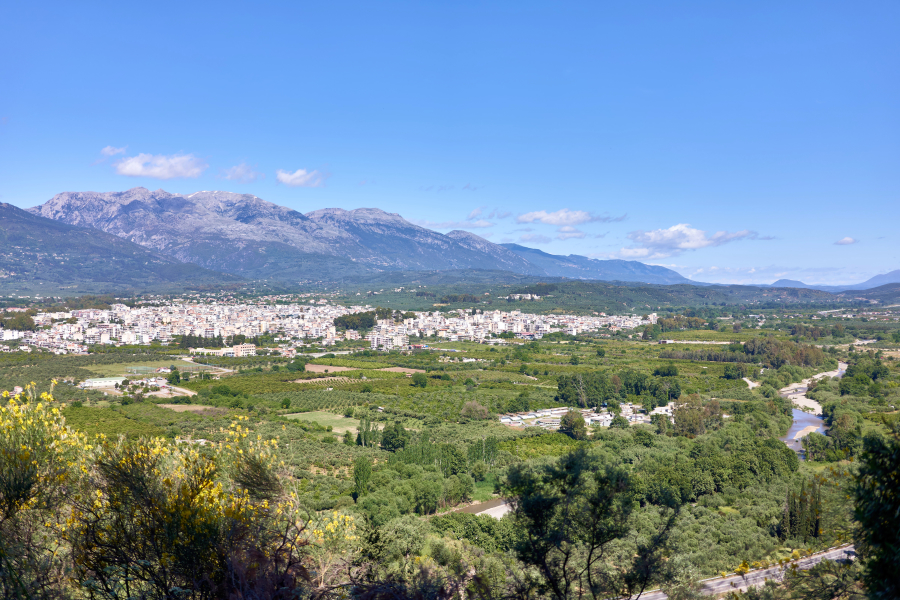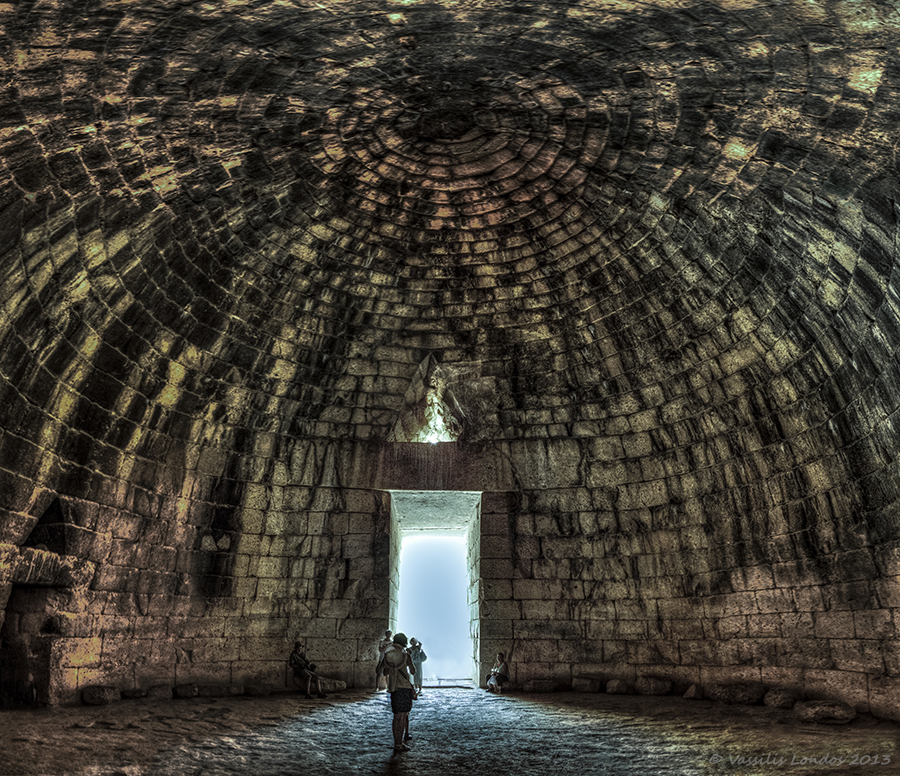- HOME
- Peloponnese
- Patras
Patras
Patras, or Patra, in the Peloponnese is Greece's third-largest city, home to Greece's largest Carnival, with many Roman and Greek remains, museums and churches.
Although it is Greece's third-biggest city, Patras in the Peloponnese isn't much on the tourist trail. It doesn't even have a direct flight with Athens, although you can drive there from Athens in 2-3 hours, or get there on the bus in 3-4 hours. If it's known for anything it's for being a busy port and for having the biggest Carnival celebrations in Greece.
When to Visit Patras
Patras has a Mediterranean climate and you can happily visit it at any time of year. Most rain falls in the winter and December is the wettest month with an average of 13 rainy days. However, the average temperature in December is 11.9C (53.4F) and it never falls below freezing.
The driest months are June to September, with very little rainfall. The average temperatures for those months ranges from 22.7-25.3C (72.9-77.5F), making it a very pleasant time to visit.
Many people visit in February when Patras holds the most famous Carnival in Greece. The average temperature in February is 10.7C (51.3F) with about 10 rainy days during the month. If you plan to travel then, you should book accommodation well ahead.
Getting To and From Patras
By Air
Patras has an airport which gets seasonal charter flights from several European cities, though there are currently no direct flights between Patras and Athens.
By Bus
Patras is well-served with bus connections on the main KTEL network, including with Athens. with a journey time of 3-4 hours.
By Rail
There used to be a rail connection with Athens and this is now being restored. At the time of writing the final part of the journey to Patras has to be completed by bus, but soon the service should be restored in full.
By Road
It takes about 2-3 hours to drive from Athens to Patras. From Patras you can easily get around the Peloponnese. If you want to avoid driving into the city then there is a ring road which takes you around it. You can also cross the Gulf of Corinth into Northern and Western Greece using the impressive and graceful Rio-Antirio Bridge.
By Sea
Patras has long been one of Greece's major ports, both for commercial trade and passenger transport. It has ferry connections with several of the Ionian Islands, with the city of Igoumenitsa, and with several Italian ports, including Venice.
Ferries in Greece
Ferries in Greece has an excellent and very thorough website where, in addition to checking ferry schedules and times, you can also book tickets and get lots of useful information about travelling by ferry in Greece.
Things to See in Patras
Although it is a busy port, and many people pass through it every day, Patras has more than enough things to see to warrant a stay of a few days.
Patras Archaeological Museum
The building itself is strikingly modern, and it houses an impressive collection as Patras has many fine ancient archaeological sites.
Roman Remains
Patras was a major city when the Romans invaded Greece, and many Roman remains can be seen. These include the Roman Theatre from 160AD, a nearby Roman amphitheater, an aqueduct, the ruins of a stadium, and parts of walls and bridges.
Greek Remains
Just outside Patras is the Mycenean Cemetery of Voudeni (or Skioessa), which is one of the most important Mycenean sites outside of Mycenae itself.
Patras Castle
Overlooking the city, the castle dates back originally to the 6th century AD, although the walls you see today are from the Venetian period of the 17th-18th century. The interior has been turned into a public park.
The Church of St Andrew of Patras
The Church of St Andrew of Patras is the most imposing church in the city and is dedicated to the St Andrew, who was crucified in Patras in 69AD. The church was built on the spot where it is said to have happened.
Patras Carnival
Patras Carnival is famous throughout Greece, and is in fact one of the biggest Carnival celebrations throughout the whole of Europe. It's been taking place for over 160 years. Events usually start in late January, depending on the dates of Greek Easter, and go through till the first Monday in Lent, known in Greece as Clean Monday. You can find out all about the Patras Carnival on the Carnival website.
Latest Posts
-
Explore Vikos Gorge: Hiking, Rafting, and Food in Zagori
One of the most impressive canyons in Europe and one of Greece’s favorite mountain destinations, Vikos Gorge invites hikers and food lovers alike. -
Lefkada: The First Ancient Theater of the Ionian Islands Comes to Light
The first ancient theater ever discovered in the Ionian Islands is located in the heart of the ancient city of Lefkada, established before the end of the 7th century BC. -
5 Epic Island Hikes in Greece for Spring Explorers
This spring, five majestic peaks across Greece’s islands invite us to lace up our boots and discover a wilder side of island life. -
Greek Ferry Services to Halt on May 1 Due to Labor Strike
Ferries in Greece will remain docked for 24 hours on Thursday, May 1, as the Pan-Hellenic Seamen’s Federation (PNO) joins Labor Day mobilizations announced by the General Confederation of Greek Labor… -
Sifnos: Greece’s Hidden Culinary Star on the Rise
Sifnos, a Cycladic island, is gaining fame for its rich culinary heritage, especially the beloved melopita honey-cheese tart. -
Easter in the Mystical Castle of Monemvasia
In the castle town of Monemvasia, with its dramatic medieval backdrop and sea views, Easter is a deeply spiritual and atmospheric experience. -
Easter in Leonidio: A Tapestry of Light, Culture and Cliffs
In Leonidio, Easter comes alive with handmade hot air balloons in the sky and lanterns made from bitter oranges in the streets. -
The Lesser-Known Traditions of Greek Easter
Step off the beaten path this spring and discover the enchanting — and often surprising — Easter traditions found across Greece. -
April 9 Strike in Greece to Impact Public Transport, Ferries and Air Travel
Transportation and travel across Greece will face disruptions on Wednesday, April 9, as public transport, ferry and aviation workers join a nationwide strike called by Greek labor unions. -
Ancient Theater of Lefkada Brought Fully to Light Following Systematic Excavation
The Greek Culture Ministry has announced that the first ancient theater ever identified in the Ionian Islands has recently been brought fully to light on Lefkada, revealing an impressive monument that…






























